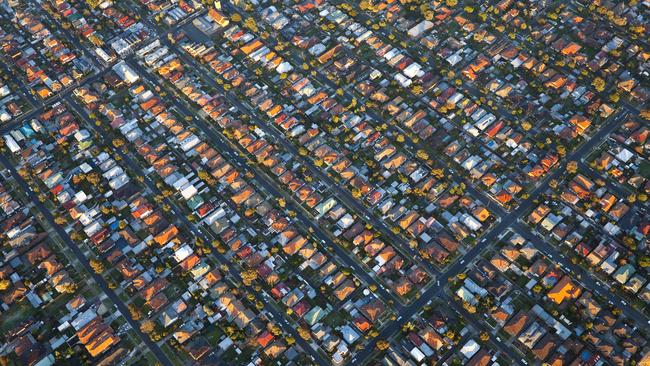Forgotten factor pushing home prices sky high
One major neglected factor in Aussie’s lifestyle choices is contributing dramatically to the overheated real estate market across the country.
Property
Don't miss out on the headlines from Property. Followed categories will be added to My News.
One of the reasons Australia has such a long history of continually rising property values is that so many of us choose to live in one of just eight capital cities. In fact, 75 per cent of Australia’s population lives on just 2.6 per cent of the country’s total land mass, according to CoreLogic data.
This is one of the elements that makes Australian property unique to other countries in terms of its reliable capital growth and relative resilience in cyclical downturns. In a new report, CoreLogic examines the impact of population density on housing values, and some of the data may surprise you.
For example, the most expensive market in the country – Sydney – has the highest population of all the capital cities but only the third highest population density. The most densely populated capital city is Melbourne with 521 residents per square kilometre (sq km). Next is Adelaide with 444 people per sq km and then Sydney with 440 per sq km.
Perth follows at 360 per sq km, then the ACT 198 per sq km, Brisbane 171 per sq km, Hobart 150 per sq km, and Darwin 48 per sqm km.
MORE: Latest on home prices from PropTrack
These density numbers reflect differing rates of population growth – with a proliferation of apartments in the bigger East Coast cities to cater for it – and varying land mass between the cities.

Within the Australian apartment market, it is normal to see lower rates of long-term capital growth in suburbs where a lot of apartments are going up – or have gone up – over time. In suburbs that have the capacity for more development, it’s not uncommon to see large numbers of new apartments being built over a relatively short amount of time. This is advantageous for young buyers facing affordability challenges, but it often means lower capital growth, especially in the short to medium term.
However, the CoreLogic report shows that price growth over the past 12 months has been well above the long-term average in several suburbs with large apartment precincts and populations. This may be a symptom of Australia’s chronic undersupply of housing, a lack of stock for sale over the past year and record levels of immigration. Let’s take a look at some examples of the best price growth in Australia’s highest-density suburbs.
In NSW, the best example is Newtown, in Sydney’s inner west. It is home to 9,800 people per sqm km and the median apartment price is just under $840,000. Newtown’s 10-year average annual price growth for apartments is 3.5 per cent but over the past 12 months, values have grown by 9.2 per cent.
In Victoria, Melbourne CBD-West has almost 20,000 people per sq km and a median apartment price of just under $450,000. The 10-year average annual growth rate is -0.4 per cent but the 12-month growth rate is 7.6 per cent.
Australia’s chronic housing shortage was exacerbated during the pandemic, when lockdowns reduced building approvals and completions; as well as after the pandemic, when inflation drove the cost of building materials higher and many projects were delayed due to labour shortages.
This along with burdensome government red tape and NIMBYism are resulting in fewer development approvals today. The latest data from the Australian Bureau of Statistics shows 3,771 apartments and other medium-density homes were approved in February, which was the lowest level in 14 years.
In terms of completions, 12,116 apartments and other medium-density properties were finished in the December quarter last year, which was the lowest level since the March quarter of 2022.
The CoreLogic report points out that population density is rising in every capital city but in different ways. For example, the largest population increase over the past 20 years has been in Perth, but its residential population is just 2.3 million – less than half the size of Sydney or Melbourne.
Perth has more geographical capacity to build new housing ‘outwards’ to cater for its population growth, and has also allowed new houses to be built on smaller blocks of land. As a result, it has the highest portion of houses among the capital cities today.
This contrasts with Sydney, which has less capacity for urban sprawl now, so building ‘upwards’ (i.e., more apartments) has become a necessity to accommodate ongoing population growth.
* John McGrath is the founder, Managing Director and Chief Executive Officer of McGrath Estate Agents
Originally published as Forgotten factor pushing home prices sky high




